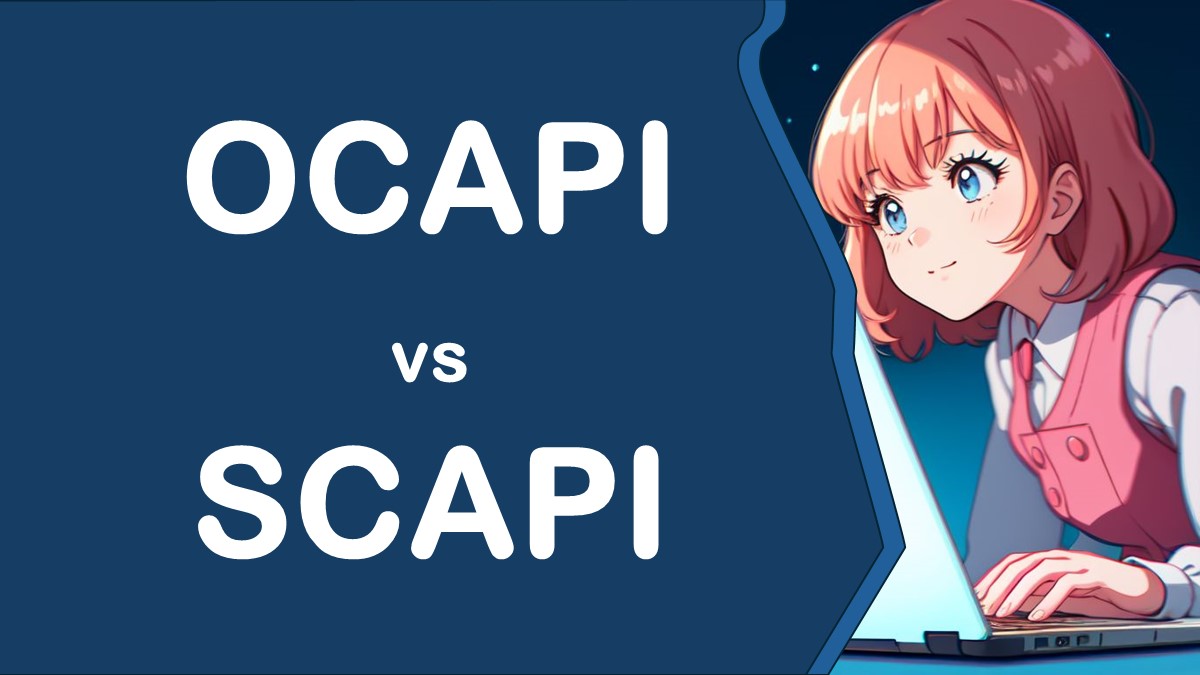In the world of Salesforce Commerce Cloud, two essential concepts that developers and administrators often encounter are OCAPI and SCAPI. These acronyms might sound complex, but fear not, as we will break them down into simple terms for easy understanding.
Table of Contents
What is OCAPI?
OCAPI stands for Open Commerce API. Think of it as a gateway that allows different applications to communicate with the Salesforce Commerce Cloud platform. OCAPI provides a set of rules and protocols that define how software components should interact. It enables developers to access and manipulate data within the Commerce Cloud environment.
Key Points about OCAPI:
- Shop API: This part of OCAPI is used to access public shop information like products, catalog data, images, and prices. It does not require authentication for general information.
- Data API: This component allows access to merchant resources such as coupons, customer lists, and content. Authentication is needed to interact with this data.
- Meta API: Provides details about the resources and documents available through the Open Commerce API.
What is SCAPI?
SCAPI, on the other hand, stands for Salesforce Commerce API. This API is specifically tailored for interacting with the Salesforce Commerce Cloud platform. It offers functionalities that are more specific to the Commerce Cloud environment and its features.
Key Points about SCAPI:
- Customization: SCAPI allows for customization of resources on the server-side within the Commerce Cloud environment.
- Caching: It supports caching mechanisms to improve performance by storing frequently accessed data locally.
- Client Application Identification: Ensures that client applications are properly identified for security and tracking purposes.
Key Differences Between OCAPI and SCAPI:
- Scope: OCAPI is more generic and can interact with various systems, while SCAPI is tailored specifically for Salesforce Commerce Cloud.
- Functionality: OCAPI focuses on providing access to data and resources, while SCAPI offers more specialized features for working within the Commerce Cloud ecosystem.
- Authentication: OCAPI requires authentication for certain operations, whereas SCAPI integrates closely with Commerce Cloud’s authentication mechanisms.
key differences between OCAPI and SCAPI:
| Feature | OCAPI | SCAPI |
|---|---|---|
| Purpose | Primarily used for integrating with back-office systems, such as ERPs, CRMs, and other third-party systems. | Designed specifically for building and customizing the customer-facing online storefront (the website). |
| Target Audience | Developers integrating with SFCC backend systems. | Frontend developers and designers building and customizing the online storefront. |
| Data Access | Provides access to a wide range of data and functionalities exposed by SFCC, including customer data, product catalogs, and order management. | Focused on providing access to data and functionality relevant to the customer’s shopping experience, such as product details, cart management, and checkout processes. |
| Security | Supports OAuth authentication for secure access to resources. | Built-in support for authentication and authorization mechanisms to ensure secure interactions with the storefront. |
| Customization | Offers flexibility for customizing data requests and responses based on specific business requirements. | Enables customization of the storefront’s appearance, behavior, and user experience through templates, scripts, and styles. |
| Usage | Often used for backend integrations, headless commerce setups, or building custom applications that interact with SFCC data. | Utilized by frontend developers to create visually appealing and user-friendly online shopping experiences. |
| Example Use Cases | – Syncing product data between SFCC and an external product information management (PIM) system. – Integrating SFCC with a CRM for customer data synchronization. | – Designing and implementing custom product detail pages with unique layouts and features. – Creating custom checkout flows tailored to specific business requirements. |
In conclusion, while OCAPI serves as a broader API for interacting with different systems, SCAPI is designed to cater specifically to the functionalities and requirements of Salesforce Commerce Cloud.
By understanding the distinctions between OCAPI and SCAPI, developers and administrators can leverage the strengths of each API to enhance their interactions with the Salesforce Commerce Cloud platform.

1 thought on “Understanding the Difference Between OCAPI and SCAPI”